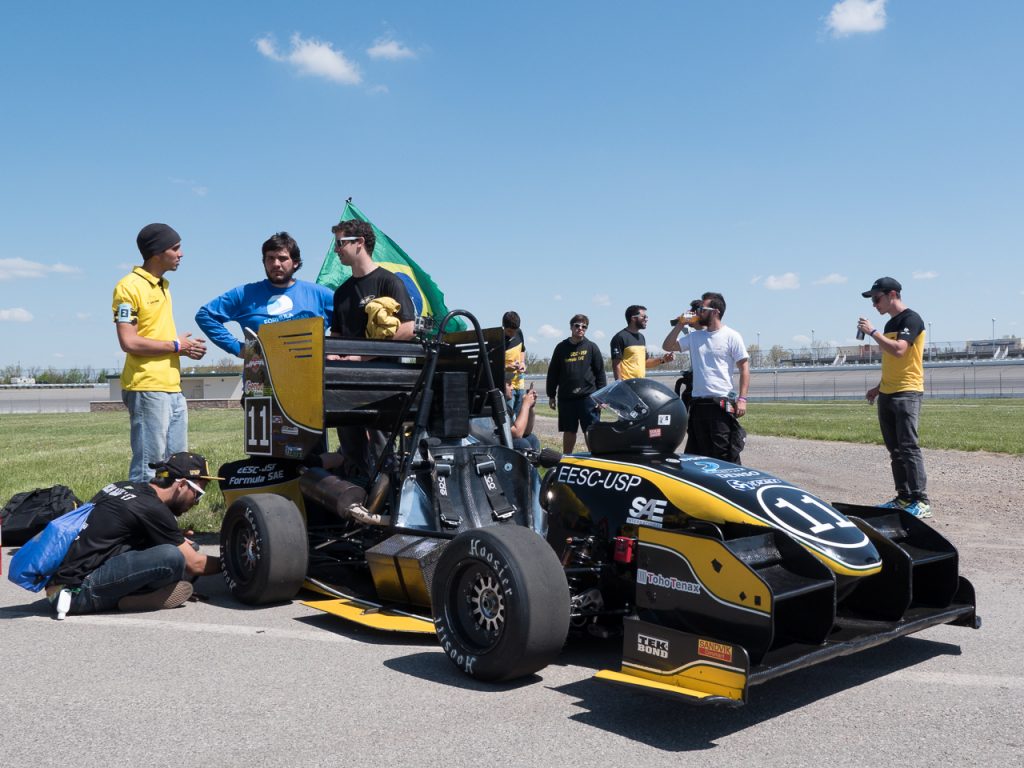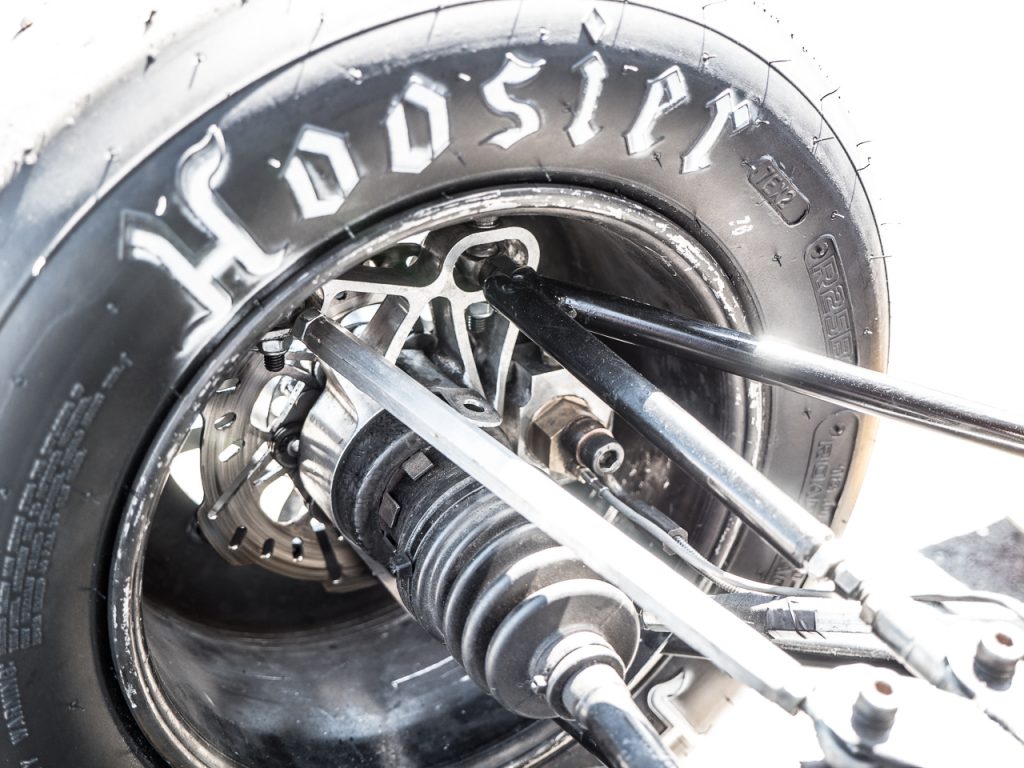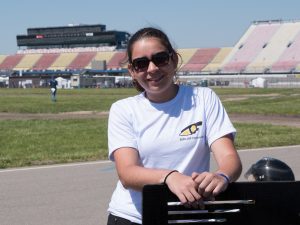Engineering Innovation with Limited Resources and Budget
Excellent engineering solutions are made by engineers, not by budget and equipment! – During my visit at Formula SAE Michigan in May 2017, I was lucky enough to get to know FSAE team EESC USP (here their facebook page) from Sao Paolo, Brazil. I was part of the group judging their racecar’s engineering design. We could see that this car might not be the fastest on track – a bit too heavy here and there and some components were in an early iteration of optimization. But we soon learned how well their designs were developed. We – the judges – were more than happy to appoint them as design finalists. From experience, I’ve seen that teams that are great in the engineering part of Formula SAE have the potential to win events 1 to 3 years down the road. So even if you have a limited budget you can come up with creative ways to solve problems.
Their keys for success, but not limited to these, are:
- High level of understanding
- Sopisticated engineering methodology
- Professional communication skills
- Creativity to find high impact solutions with limited resources
One example that I thought is worth mentioning is about the brake system that they built. Built? Yes, they simply couldn’t afford industry grade components from suppliers. They sat down, designed and manufactured the entire system
on their own including rotor, caliper and master cylinder. They ended up with a system being even lighter and smaller compared to the component they couldn’t affort. See a photo below.
The other judges from industry also agreed. Check out their feedback:
David: “I was very impressed by Sao Paulo’s aerodynamics understanding, design methodology, and communication skills. They were one of the very few teams that demonstrated to me that they truly developed their aerodynamics from a high-level, full vehicle systems approach starting with comprehending targets and ending with on-track validation. Their design procedures and execution of their goals were very strong. Sao Paulo performed extensive DOEs to comprehend not only if a design works or not, but understand each design parameter’s sensitivity to performance. While their car may not have had as many complex aerodynamic mechanisms as some of the other teams (ex: active aero, extensive vortex generation/control, advanced composites, etc.), I felt each aerodynamics component on the car was understood by the team and justified using data. Lastly, I believe they utilized their resources in very creative and efficient ways. For example, they did not have access to a full-vehicle wind tunnel like some other teams, but still found ways to persevere and validate their aerodynamics package using coast down testing and track data.”
Preston: “The team’s work stood out because they presented a complete and functioning system that offered huge value to the team. The engineers were able to share examples where the data they collect was utilized by numerous team sub systems to optimize and improve. They were also able to demonstrate their bi-directional telemetry system which allowed them to monitor the racecar during events and even adjust the calibration without touching the car. This electrical architecture rivaled the best teams at competition and was even more impressive with the limited resources the team worked with.”
Alan: “I talked to the Sao Paolo team about two areas of their car – the chassis and front suspension upright design. […] Every team we talked to quoted a target weight for their component, but had no real reason why they targeted this weight. When we asked Sao Paolo why they targeted their stated weight, they responded that this was competitive/comparable to the best teams in the event. I asked how they knew that, to which they responded “the other teams tell us their weights”. I asked them to clarify what they meant by this. They said that one way or another, all of the top teams’ component weights were available. Some were on Facebook pages, some on university websites, and others they simply asked for. They then looked at the weight data gathered vs. their own manufacturing capabilities and chose what they felt was a competitive weight target for the component. We thought this to be a very creative use of available resources to determine a realistic goal that they reportedly achieved. A similar, even easier to compile example of competitive benchmarking would be the overall vehicle weight, front/rear distribution, tire size, tire compound, etc., which is free info that all of the teams could collect at the competition yearly. However, I’ve never seen a single team collect, analyze, and present this competitive analysis. I can assure you that if this type of information were available amongst professional racing teams, we would all mine the data and constantly evaluate. The fact that Sao Paolo performed an analysis on a dataset that was more difficult to collect made it all the more notable in my mind.”
Last but not least, let me share an interview that Laura and I, we had together talking about team and car, her responsibilities and plans.
Frankly, to me this team from Sao Paolo is an inspiring example! I am curious to read your comments and to hear whether you agree.
Cheers Christoph











コメント
コメントを残すには、ここ をクリックして MathWorks アカウントにサインインするか新しい MathWorks アカウントを作成します。